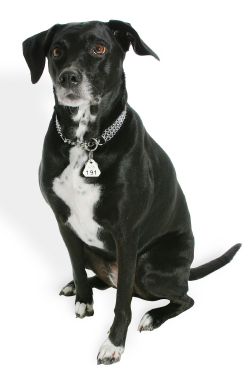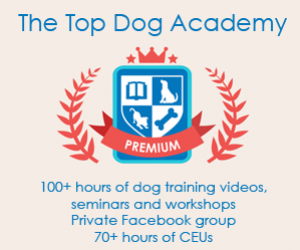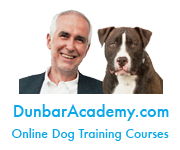Open Paw’s Guide To The First Two Weeks With Your New Dog

Congratulations on the new addition to your family! With a little work, some planning, and forethought, your new dog will be an effortless, well-behaved companion for years to come. It is important to recognize that first impressions are lasting ones and habits begin to develop from day one. Be sure to instill good manners and habits from the first day you bring your new puppy or dog home. Remember, good habits are as hard to break as bad ones. If you follow these simple guidelines, your dog’s transition into your home will be a piece of cake for both you and your new best friend.
1. Teach your new dog the rules of your house from the beginning. In the words of Dr. Ian Dunbar, “If you want your dog to follow the rules of the house, by all means do not keep them a secret.” When your dog first gets home, he or she may be a little confused and unsure of the new living situation. Even though your home is undoubtedly comfortable, it is different than where your dog came from, and different can be stressful. It is important to remember dogs do not speak or comprehend language and will best understand your expectations through training and management. Training and management should begin the very moment your new dog arrives in your home. Your instinct may be to give your new friend a few days to unwind and adjust before imposing rules and restrictions. While you may mean well, this delaying of training has the potential to be both frustrating and damaging. Right from the very first day, it is crucial to convey your expectations to the dog and to establish an errorless training system. If you do this, your dog will succeed in learning house rules right from the beginning. If you change the house rules a few days after your dog has arrived, he will not understand why things have changed. Your dog may have already formed new habits and will have a difficult time adjusting to yet another set of expectations. It is much more efficient to teach your dog everything you would like him of her to know from the outset.
2. Try not to overwhelm your new dog with too much activity during this initial adjustment period (individual dog’s adjustment period will vary). It is very exciting to have a new dog. Of course you want to introduce her to all of your friends and family and of course you want to take your new pal everywhere! All this excitement however could be exceptionally stressful for your dog. Please keep in mind that even in the best of situations your dog’s world was probably limited to a handful of environments and activities. It is best for your dog to spend the first couple of weeks quietly settling in and getting to know you with brief but very frequent outings to continue the socialization process. In the beginning, limit introductions to just a few visitors at a time. If your dog has time to become familiar with you and your home surroundings, she will be more confident when setting out on adventures beyond your immediate neighborhood. This does not mean to delay socializing your pup, please do!, however try not to overwhelm your dog, especially if you have adopted a dog over five-months of age.
3. Keep your new dog either safely confined with appropriate chew toys, or supervised at all times. This is the best way to keep your new friend (and house!) out of trouble when you are unable to monitor his actions. Your dog requires a dog-proof, safe place: a “doggie den” -the equivalent of a toddler’s playpen- where he can rest and chew appropriate items in your absence. There are many options for your “doggie den,” but a dog travel crate or small room in your house is ideal. However, you may also choose an outside kennel run. Initially when your dog is loose in the house or even in the yard you must be around to gently redirect your dog when he chooses an inappropriate activity. If you are vigilant about supervising our dog and showing him what you expect, your dog will learn to settle down quietly, to chew only appropriate chew toys and eventually to become trustworthy in your absence.
FOLLOW THESE GUIDELINES FOR AT LEAST THE FIRST TWO WEEKS WITH YOUR NEW DOG. PLEASE REMEMBER MOST PUPPIES AND EVEN SOME ADULT DOGS WILL TAKE LONGER TO ADJUST SO BE PATIENT.
-DO immediately show your dog to his/her appropriate toilet area.
-DO; take your dog to the designated toilet area once an hour, every hour, on leash (except overnight). Allow supervised free time only after he relieves himself in the appropriate area. If your dog does not go to the bathroom on one of these trips, confine him to his “doggie den” OR keep him on leash and supervised, until the next scheduled potty break.
-DO, confine your dog to a “doggie den” whenever you are physically (or mentally!) absent. Such as when you are at work, paying bills, making dinner, sleeping, etc. -DO throw away your dog food bowl! Instead, feed your dog out of a hollow Kong or other chew toy stuffed with kibble and snacks throughout the day, especially when she in her “doggie den” or when you are busy. Also use part of your dog’s daily ration while on walks, during training or when meeting new people.
-DO provide plenty of appropriate chew toys to keep your dog busy and prevent chewing “casualties” in your home and yard. Redirect any chewing “mistakes” by directing your dog to an acceptable alternative. This will also help establish an appropriate chewing habit for the lifetime of your dog.
-DO introduce your dog to new people and other pets gradually so as not to overwhelm him. Use kibble and treats to help form a positive association to new people. Be sure he has access to his “den” in case he needs a break from all the activity.
-DO enroll in a basic obedience class right away! This will help you to understand how to better communicate with your dog in a way she will understand.
-DON’T allow your dog free run of the entire house right away, or else your new friend may learn all sorts of bad habits. First take the time to teach him good habits.
-DON’T take your dog off-leash in public until you have successfully completed an obedience class and have built a strong positive relationship with him.
-DON’T feed your dog out of a bowl; all food should come either out of a chewtoy specifically designed for feeding or from somebody’s hand. For more information regarding training your dog please read Dr. Ian Dunbar's book “AFTER You Get Your Puppy”
Want to raise the perfect puppy?
Learn more about puppy training with The Best Online Puppy Training Programs:
The Top Dog Academy. Learn how to deal with puppy biting, crate training, toilet training, socialization and more with videos, worksheets and podcasts about puppy training. When you join the Top Dog Academy you also get access to personalized email support so you can train your puppy yourself. Use this link to get your first month for free.
SIRIUS Puppy Training. Looking for more support? Get personalized, real-time, video dog training guidance from an expert SIRIUS Puppy Training instructor. Dr. Dunbar's SIRIUS Puppy & Dog Training classes revolutionized the world of pet dogs when they were first created. Now, our online small-group classes allow you to get the expert assistance you need from the comfort of your home.
.




